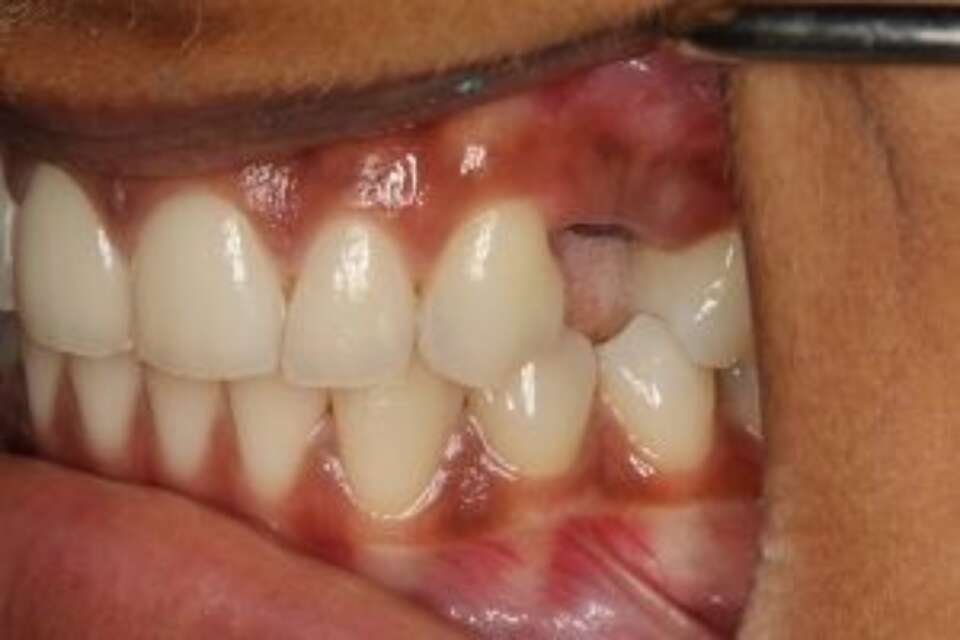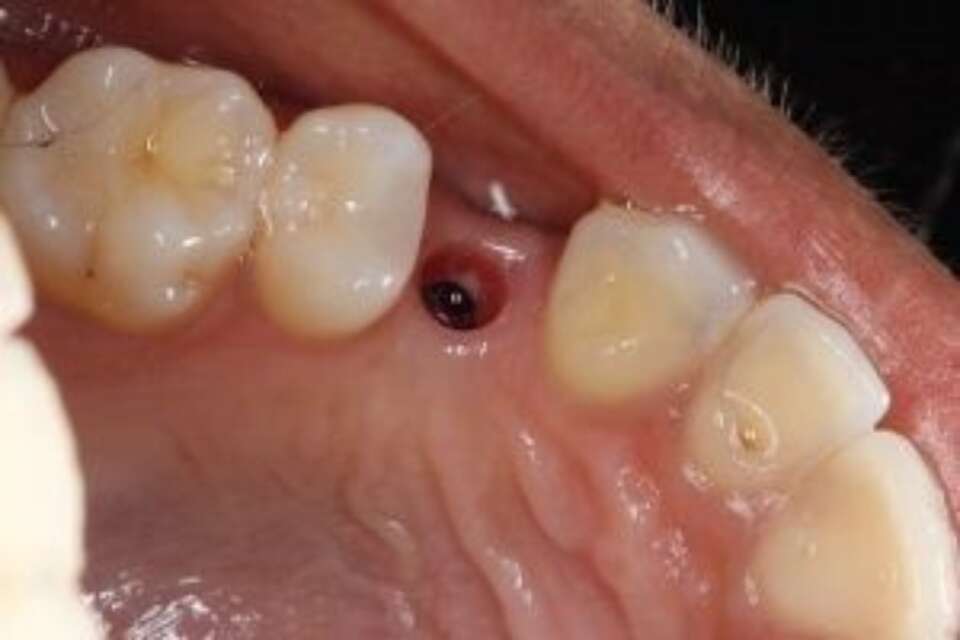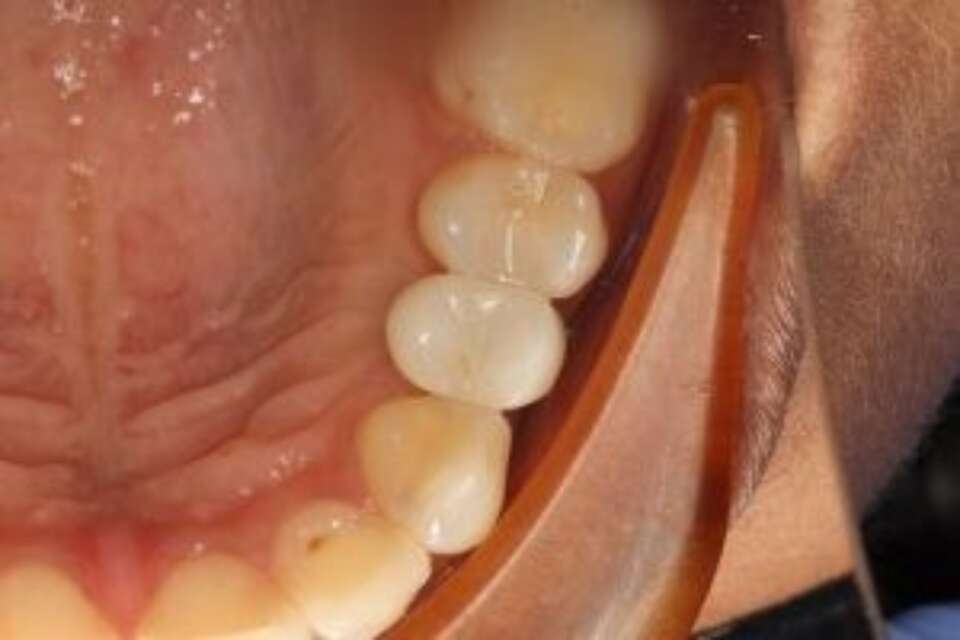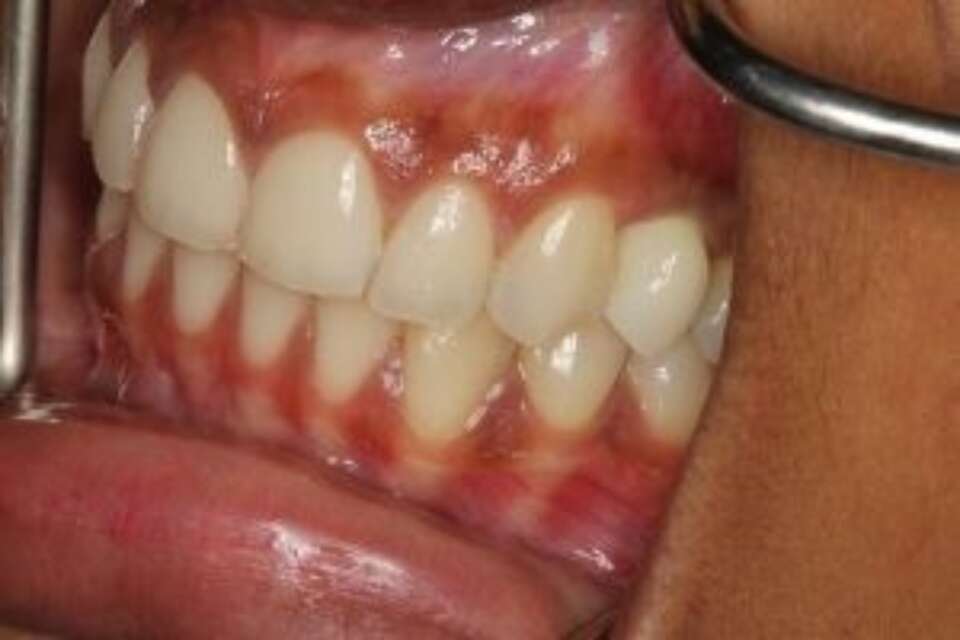Dental implants are the best way to replace a single missing premolar tooth; at present there is no alternative that can offer the same benefits as dental implants. These include:
1. A fixed tooth to replace the missing one
2. The adjacent teeth do not need cutting down
3. Preservation of the bone and gum tissue
4. Restoring function to that of the natural tooth
5. Excellent aesthetics as the new tooth emerges from the gum line
6. Dental implants cannot decay
7. Longer lasting than traditional alternatives such as dentures or bridges
Dental Implant to Replace a Missing Premolar Tooth
|
|
PlanningIn our presented case, the left first premolar tooth had been missing for about five years. During this time, the tissue resorbs (shrinks) which includes the bone and soft tissue. Therefore, in such a case, we have to plan initially and see what tissue is available for the dental implant. The only way to do this is by taking a 3-D CBCT scan. This gives us vital information in terms of width of bone, height available to the sinus floor, density of bone, angulation, the presence of any undercuts and all of the relevant adjacent teeth. The use of dedicated software such as Nobel Clinician, Blue Sky Bio, Implant Studio are very useful to determine the best position for the implant. A dedicated guide can be made to help the placement. |
Dental Implant Placement ProcedureOnce all of the planning has been completed, we can then place the dental implant. In most cases, the dental implant is placed under local anaesthetic for a single missing tooth. We have techniques which make the procedure as comfortable as possible using the use of laser. The Waterlase i Plus can raise a flap without the need for a scapel. It is also excellent at removing granulation tissue, excess tissue and making the initial osteotomy. We adopt a minimally invasive approach which involves using as much of the available bone as possible by expanding the sites rather than drilling away good healthy bone. |
How Long Dental Implants Take To HealThe healing period is usually twelve weeks unless early or immediate loading is planned. |

Healing abutment in place

Healed dental implant site- note the cuff of tissue surrounding the implant
Dental Implant RestorationIn most cases, we opt for screw retained restorations. This is because the crowns are easy to remove if required and there is an absence of cement which could extrude into the tissues and cause peri implantitis. The required torque is dependent on the system used, in the region of 25-35Ncm |

Screw retained occlusal view - access hole not visible
|
In the past, the screw access holes were visible and has a grey appearance due to the metal underneath. However, now with full contour zirconium, we can avoid that aesthetic issue and provide a restoration that looks just like a natural tooth. |
Dental Implant After CareDental implants require greater levels of dental implant after care than natural teeth. Thorough interdental cleaning on a daily basis is required and regular hygiene visits are recommended. Failure to comply with oral hygiene regimes can lead to peri implantitis and loss of the implant in the long term. |

